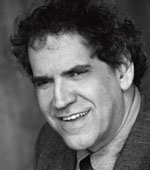By Rabbi Michael Leo Samuel

CHULA VISTA, California –Reb Zalman Schachter-Shalomi (1924-2014) died on July 3rd this past week. The world has lost of one its greatest and most imaginative modern Rebbes of modern times. In the early sixties, he and Shlomo Carlbach were among the earliest followers of Rabbi Schneersohn and their success set the standard for generations of Chabad shiluchim (emissaries).
My experience with Reb Zalman goes back almost four decades to when I was about nineteen years old. Reb Zalman often used to travel to the Bay Area where he would do a variety of workshops.
In the summer of 1973, I vividly remember him wearing a rainbow colored Tallit on Shabbat. When I asked him about the significance of his tallit, I remember him explaining to me how each color corresponded to a color of the Kabbalistic Tree of Life.
I knew right away that Reb Zalman thought outside the box! Reb Zalman gave me a glimpse of what life might look like outside of Lubavitch.
After returning from vacation, I asked my teachers about him. Chabadniks often describe him as brilliant but somewhat wayward, a maverick of sorts. According to one narrative, young Zalman Schachter asked the Lubavitcher Rebbe if he could succeed him as the next Rebbe of Lubavitch. The Rebbe smiled and politely declined his offer, and said, “I hope that the Moshiach (Messiah) will replace me.”
Over the decades, Reb Zalman outgrew Lubavitch, and he subsequently became his own kind of Rebbe. As a modern Jewish visionary, he was one of the early exponents of interfaith dialogue that went far beyond the stodgy world of Jewish-Christian dialogue. Reb Zalman created bridges of mutual understanding with the Buddhist, Sufi, Hindu, and other religious traditions. He incorporated many of their techniques (e.g., Dervish-dancing) and meditation into Judaism.
He was also the first American Rabbi to be invited by the Dali Lama, who wanted to understand the mystery and lessons of Jewish survival for his own Tibetan community. Reb Zalman was a pioneer and a visionary who sought to create a new kind of Jewish spirituality that would attract many young Jews who became disillusioned by the vapid and rote forms of Judaism that remain endemic of modern Jewish life. He often had workshops designed to teach rabbis about the importance of silence—not an easy task indeed!
In my lifetime, I have known some outstanding spiritual teachers. I will remember Reb Zalman and R. Akiba Greenberg as two great giants of spirit who left a lasting influence on me. They were both in many ways, kindred spirits who actually personally knew each other.
In retrospect, I would have to say that Reb Zalman had a much greater impact on me than Rabbi Schneersohn. Reb Zalman’s smile was contagious; he was always approachable. Reb Zalman always took a sincere and personal concern all of his students and followers spirituality. He often recommended interesting meditative exercises to open my spirit to new possibilities. At times, he could be at times painfully honest—but always in a gentle sort of way. Often times, he offered advice to me that I did not solicit. Every year, I would always call him and see how he was doing and his memory was always sharp even to the end. A few months ago, he gave me a lovely recommendation on the cover of my new book, A Shepherd’s Song: The Shepherd Metaphor in Psalm 23 and in Jewish Thought.
As we grew older, Reb Zalman always used to say that we must go “from aging to saging,” a theme that later became of his most important books. For baby-boomers, this is wonder advice for all of us to remember.
Another one of the most important lessons he bequeathed unto a new generation of Jewish spiritual teachers is the importance of learning how to find their own spiritual voice. He also understood the power of the synagogue as a spiritual crucible for renewal and new possibilities.
His love for Jews of all backgrounds made him one of our most endeared rabbinical figures of modern times.
A great man has passed away and all who knew him will miss him.
*
Rabbi Samuel is spiritual leader of Temple Beth Sholom in Chula Vista. He may be contacted via michael.samuel@sdjewishworld.com